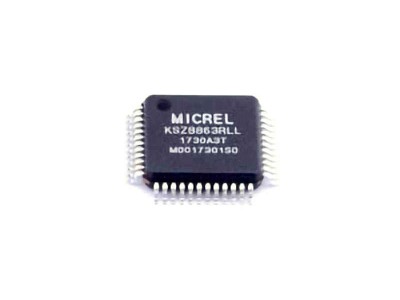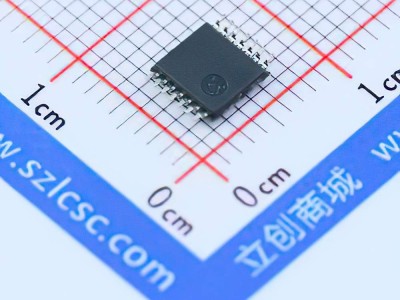Common Troubleshooting Issues and Their Solutions for EP2C8F256I8N FPGA
The EP2C8F256I8N is a popular FPGA (Field-Programmable Gate Array) from Intel (formerly Altera) that provides significant versatility for both novice and expert engineers. However, like all complex hardware, users can encounter problems during setup, design, and debugging. This article delves into the common issues faced when working with the EP2C8F256I8N FPGA and provides practical solutions to help you troubleshoot and resolve them effectively.
1. Power Supply Issues
One of the most common problems that FPGA users face is an insufficient or unstable power supply. The EP2C8F256I8N FPGA operates at various voltage levels, including 3.3V for I/O and 1.2V for core voltage. Power-related issues can cause the FPGA to malfunction, or in some cases, fail to initialize altogether.
Symptoms:
The FPGA does not power on.
Incorrect behavior such as erratic outputs or communication failures.
No response to configuration or programming attempts.
Solution:
To resolve power-related issues:
Check Voltage Levels: Use a multimeter to verify the voltage levels supplied to the FPGA. Ensure the 1.2V core and 3.3V I/O voltages are stable and within specification.
Decoupling capacitor s: Ensure proper decoupling capacitors are placed close to the power pins to reduce noise and voltage spikes. Refer to the FPGA datasheet for recommended capacitor values.
Power Sequencing: Ensure that the power-up sequence is followed correctly. Some FPGAs, including the EP2C8F256I8N, require specific sequencing for the core and I/O voltages to avoid damaging the internal circuitry.
2. Configuration Problems
FPGAs like the EP2C8F256I8N rely on an external configuration memory or programming interface to load the design. Improper configuration can result in a device that is either non-functional or behaves unpredictably.
Symptoms:
Configuration failure or timeout errors during the programming process.
Design fails to load or runs in a "default" state.
Unexpected behavior when running the programmed design.
Solution:
To troubleshoot configuration problems:
Verify Configuration Files: Double-check the configuration file (e.g., .sof or .pof) for errors. Ensure that the file was properly generated during the synthesis and implementation process. Incorrect file generation can prevent successful programming.
Inspect the Programmer/Configuration Interface: If using a JTAG programmer, confirm that it is properly connected to the FPGA and the PC. Ensure the correct drivers are installed for the programmer and that communication is stable.
Check for Configuration Pins: The EP2C8F256I8N has specific pins dedicated to configuration. Verify that these pins are correctly set according to your configuration interface. For example, ensure that the 'nCONFIG' pin is properly pulled low to initiate configuration.
Use the Quartus Programmer: In cases where a programming error occurs, try using Intel’s Quartus software to run diagnostic tests, such as the "Programmer" tool, to check the FPGA’s response during the configuration stage.
3. Clock ing Issues
Clocking is an essential part of FPGA designs. The EP2C8F256I8N, like most FPGAs, requires stable clock signals to operate correctly. Incorrect clock setups can lead to unreliable operations or even complete failure of your design.
Symptoms:
Timing errors or failed clock synchronization.
Incorrect operation of sequential circuits.
Glitches or timing violations in your design.
Solution:
When facing clock-related issues:
Check Clock Sources: Verify that your clock source is properly connected and providing a stable frequency. Ensure that the external oscillator or PLL (Phase-Locked Loop) is functioning as expected.
Verify Clock Constraints: In your Quartus project, check your timing constraints to ensure that they match your clock setup. The FPGA may not work correctly if the clock constraints do not match the actual signal characteristics.
Use Internal PLLs or Buffers : The EP2C8F256I8N offers internal PLLs and clock buffers that can help manage clock signals more effectively. Leverage these resources to synchronize multiple clock domains within your design.
Signal Integrity: Use an oscilloscope or logic analyzer to verify the integrity of your clock signal. Look for any noise, glitches, or irregularities in the waveform that might cause problems in clock synchronization.
4. Input/Output (I/O) Signal Integrity
I/O issues are quite common when working with FPGA designs, especially when high-speed signals are involved. The EP2C8F256I8N has a large number of I/O pins, and improper handling of I/O signals can lead to malfunction or damage.
Symptoms:
I/O pins do not operate correctly or show signs of erratic behavior.
External peripherals fail to communicate with the FPGA.
Voltage level mismatches or excessive current draw.
Solution:
To ensure proper I/O operation:
Check Voltage Levels: Ensure that the I/O voltage levels are compatible with the external devices. The EP2C8F256I8N supports various I/O standards, so make sure you’re using the correct voltage levels for your application.
Review Pin Assignments: Ensure that the pin assignments in your design match the actual physical pins of the FPGA. Mistakes in pin assignment can lead to non-functional I/O connections.
Use Proper Termination Resistors : For high-speed I/O, ensure that proper termination is used to avoid reflections and signal degradation. Place series resistors or other necessary components to match impedance between the FPGA and external circuits.
Check for Short Circuits or Open Circuits: A quick inspection with a multimeter can help identify any shorts or opens in the I/O lines. This is especially useful when you suspect a hardware fault.
5. Overheating or Excessive Power Consumption
The EP2C8F256I8N, like most FPGAs, can become quite hot when running at full load. Overheating can cause the FPGA to become unreliable, leading to performance degradation or even failure.
Symptoms:
FPGA feels hot to the touch.
Unstable behavior or system resets.
Unexpected power shutoffs or thermal shutdowns.
Solution:
To address overheating or excessive power consumption:
Improve Heat Dissipation: Add heat sinks or fans to help dissipate heat more efficiently. Ensure that the FPGA’s thermal design has adequate cooling, especially when operating at high frequencies.
Reduce Switching Activity: If you’re experiencing overheating in specific regions of your design, try to reduce the switching activity in that part of the design. Power optimization techniques like clock gating and logic optimization can reduce the load on the FPGA.
Monitor Power Consumption: Use power monitoring tools in the Quartus software to estimate power consumption for your design. If the power consumption exceeds the recommended levels, consider optimizing the design or adding more cooling.
Advanced Troubleshooting Techniques and Solutions for EP2C8F256I8N FPGA
While the first part focused on basic issues like power, configuration, and I/O, the second part of this article dives into more advanced troubleshooting techniques. These techniques are particularly useful for complex FPGA designs where conventional solutions might not work, and deeper investigation is needed.
6. Timing Constraints and Setup Violations
Timing violations are one of the most challenging problems in FPGA design. These violations occur when the design’s timing requirements are not met, leading to incorrect operation or unreliable performance. The EP2C8F256I8N supports high-performance designs, but it also requires precise timing analysis to ensure smooth operation.
Symptoms:
Timing errors or setup/hold violations during simulation or implementation.
Design fails to meet performance goals or operates inconsistently.
Unexpected glitches or data corruption.
Solution:
To resolve timing issues:
Use the TimeQuest Timing Analyzer: The Quartus software includes the TimeQuest Timing Analyzer, which helps identify timing violations by providing detailed timing reports. This tool will highlight setup, hold, and recovery violations in your design.
Optimize Critical Paths: Review the design’s critical paths and look for opportunities to reduce the number of logic levels between registers. You may need to restructure your design to shorten these paths.
Increase Clock Period or Frequency: If timing violations are unavoidable, consider reducing the clock frequency or increasing the timing margins by modifying the clock constraints or optimizing the placement of logic elements.
Place Constraints on Global Routing: In certain cases, issues arise due to excessive routing delays. Tightening the placement constraints of critical paths may help in reducing delays caused by long interconnects.
7. Internal Signal Conflicts and Resource Contention
In larger FPGA designs, resource contention and internal signal conflicts can occur, especially when multiple module s are accessing the same resources (e.g., shared memory or global buses).
Symptoms:
Intermittent faults or glitches in the design.
One part of the design works while another fails.
Resource-sharing conflicts or data corruption.
Solution:
To address resource contention:
Resource Allocation: Ensure that each module has dedicated resources, especially when multiple modules are involved in high-speed operations. Use the Quartus software’s "Resource Utilization" tool to identify resource bottlenecks.
Signal Routing: Review the routing of internal signals, particularly for global buses and shared resources. Use pipelining or other techniques to reduce the load on shared resources.
Use Multiple Clock Domains: If your design is large and includes multiple clock domains, ensure that the proper synchronization techniques are used, such as FIFO buffers or handshaking protocols.
8. Fault Isolation Using Simulation
Simulation is an invaluable tool for isolating faults in an FPGA design. The EP2C8F256I8N offers a range of simulation options, from behavioral simulation to post-implementation simulation, which can help identify issues before they occur in hardware.
Symptoms:
Design fails during hardware testing but works during simulation.
The design shows correct behavior in some cases but fails intermittently.
Solution:
Run Detailed Simulations: Perform both functional and timing simulations using tools like ModelSim or Questa. This helps verify that the design behaves as expected under all possible conditions, including edge cases and corner cases.
Model Complex Behaviors: If your design involves complex state machines or multiple interacting components, ensure they are properly modeled during simulation. This can help detect hidden design flaws that might not be obvious during initial testing.
9. External Interference and EMI (Electromagnetic Interference)
In complex FPGA applications, external interference can affect the FPGA’s behavior. This is particularly problematic in high-speed applications, where noise can introduce glitches or errors.
Symptoms:
Glitches or random errors in high-speed circuits.
Design behaves differently when connected to other external systems.
FPGA seems to work fine in a controlled environment but fails in a real-world application.
Solution:
To address EMI and external interference:
Shielding: Use proper shielding to isolate the FPGA and other sensitive components from external electromagnetic fields.
Power Supply Filtering: Use filters and proper grounding to reduce the impact of noise from external sources.
Signal Integrity Analysis: Conduct a signal integrity analysis using tools like an oscilloscope to identify sources of noise or interference affecting your FPGA signals.
10. Utilizing Debugging Tools for In-System Debugging
Intel’s Quartus software provides a suite of debugging tools, such as SignalTap II Logic Analyzer and System Console, which can help you monitor and debug the FPGA’s internal signals in real-time.
Symptoms:
Hard-to-reproduce errors in your design.
Lack of visibility into the internal state of the FPGA during operation.
Solution:
Use SignalTap II Logic Analyzer: The SignalTap II tool allows you to capture and analyze internal signals in real-time without needing to recompile your design. It can help pinpoint issues like signal glitches, timing violations, or incorrect state machine behavior.
Use System Console for Interactive Debugging: The System Console allows for interactive debugging and direct access to the FPGA’s internal registers and memory. This tool is especially useful for post-deployment debugging.
By following these troubleshooting strategies, you can efficiently identify and resolve common problems with the EP2C8F256I8N FPGA, leading to smoother and more reliable FPGA designs. Whether you’re dealing with power issues, configuration challenges, or intricate timing violations, the right approach can help you maintain robust and high-performing FPGA systems.
If you are looking for more information on commonly used Electronic Components Models or about Electronic Components Product Catalog datasheets, compile all purchasing and CAD information into one place.


